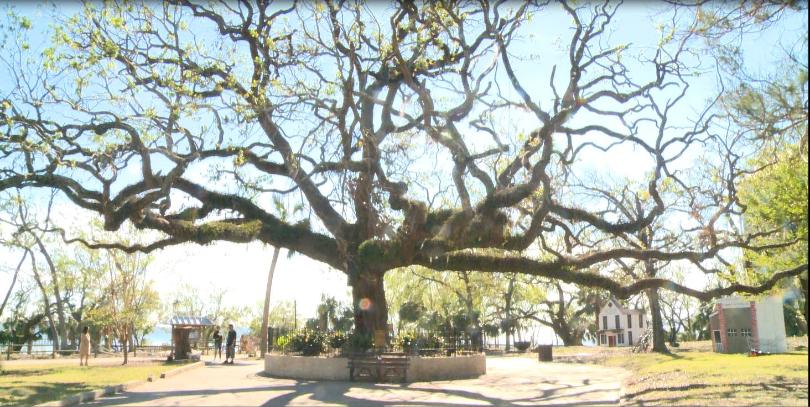Chaos means something different for everyone. Growing up as a water baby by the Gulf of Mexico in Panama City, Florida, I was enveloped in chaos from a young age. For me, a hurricane comes to mind. The apocalyptic mindset of locals scrambling to load up on gallons of water from the local Walmart; seeing neighbors boarding up their windows while others are worrying about nothing other than what type of beer to purchase for the hurricane party. Before the chaos begins, we plan and hope for the best. During the chaos, it’s sometimes a relief or it can be the worst part of it all. The aftermath of chaos is when we are forced to find the lesson, pick up the pieces, and re-build.
My best friend Marybeth aptly uses the term “hurricane” as a metaphor when discussing times of hardship with the clients she works with as a behavioral specialist. When I asked her what types of exercises she does with the children and families she helps, she decided to show me. She asked my other friend, Terri, and me to work together to draw a picture of a hurricane with a lighthouse, beach, and a boat included in the illustration. She asked us to draw the picture by communicating non-verbally. The way we worked together to complete the task would be telling of our relationship (there was a lot of giggling, so it was pretty accurate). After we drew the picture, Marybeth then asked us each to write a story about what happened before, during, and after the hurricane. Terri and I had drastically different stories–hers took on an air of humor and mine had a poignant, yet straightforward storyline.
When we compared stories, Marybeth made the point that when families, friends, or communities experience conflict, or “hurricanes,” each person will have their own point of view of the situation. She explained that the way each client tells the story is telling of their attitude toward these “hurricanes.” For me, the conclusion, the “after” part of the story, would be most telling of a person’s attitude-whether they’re a pessimist or an optimist, or a dreamer versus a realist. While the metaphor of a hurricane and dealing with conflict is a simple one, the idea that our outlook on things can play a key role in the outcome of a situation, and it is one that is also often forgotten.
A couple of months after that conversation, I found myself writing about what chaos means to me, mentioning the notable hurricanes in my life thus far that have impacted me indirectly. Hurricane Andrew (1992) put a halt to all of my first birthday festivities. Hurricane Katrina (2005) delivered one of my best college friends to Florida as a Katrina evacuee, and Hurricane Sandy (2012) threatened the life of someone I didn’t even know I loved yet.
Wednesday, October 10, 2018 would deliver a different type of hurricane. Panama City received word from the National Weather Service on Sunday, October 7th that a tropical storm was coming. That tropical storm would quickly turn into a category 1 hurricane, then a possible 3. By the time it made landfall, it was practically a category 5, leaving devastation in its path.
Chaos can be a bad thing on the surface. The definition itself describes chaos as “complete disorder and confusion.” The word “complete” tells me that there are no exceptions to chaos-it’s all disorder and confusion with little room for finding serenity without putting the work in first. I sit here writing this with a pit in my stomach as I see photos posted on social media of the schools I attended and the homes of acquaintances completely destroyed. I can’t even begin to comprehend the chaos around me.
We don’t always know why we experience these hurricanes–why you lost your loved one, why you lost your job, why you are experiencing this hurricane in your life. My advice? Feel how you need to feel about whatever that hurricane is in your life. Sometimes, we keep our feelings inside because it means we’re being strong or because others tell us to “stay positive.” Not only is this depriving us of an essential human experience of grieving, but not feeling something is unrealistic.
When there is something real going on inside of you and it is not dealt with, you become numb to every emotion–both the good with the bad. Research Professor Brené Brown (watch her TED Talk here!) says that “We cannot selectively numb emotions. When we numb the painful emotions, we also numb the positive emotions.” The good that comes from chaos is the growth we get from rebuilding ourselves during the aftermath of the tragedy. That rebuilding turns into the reserves you will draw on during the next hurricane in your life. For example, a 250-year-old tree remained standing after a category 5 hurricane in a park I used to perform Shakespeare in during the summer. That tree had grown deep roots that made it impenetrable and it took a long time to do so. You’re the same way.
Maybe that re-building period you’ll go through is meant for you to help a friend who will eventually go through the same tragedy. Maybe that strength you get from going through what you did is preparing you for something you used to be afraid to pursue. What do the hurricanes in your life look like? How do you manage the chaos around you? I promise that when we face the chaos head on, it will result in an unrelenting beauty that makes it all worth it in the end.

